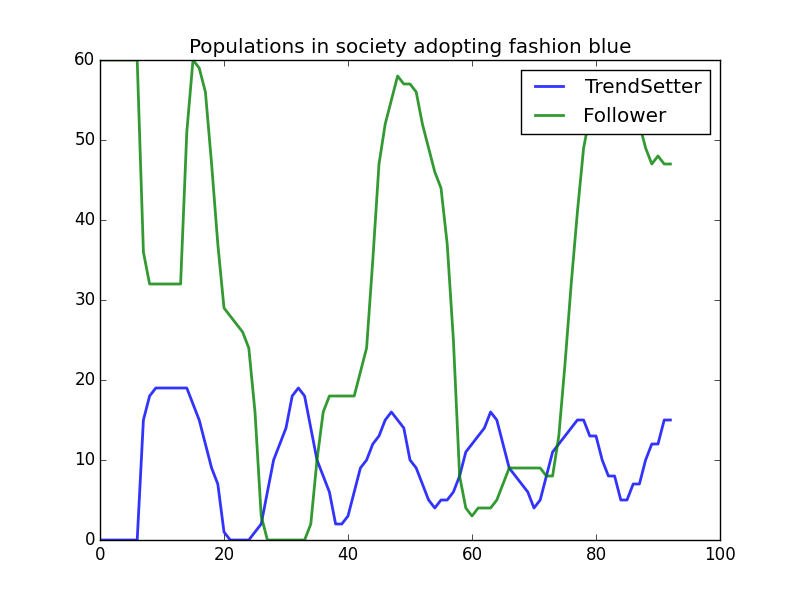Adam Smith's fashion cycle, ABM version
So my agent-based modeling system has succeeded in capturing the dynamics of Adam Smith's fashion cycle. Let's start with Smith's description of how fashion works:
Fashion is different from custom, or rather is a particular species of it. That is not the fashion which every body wears, but which those wear who are of a high rank, or character. The graceful, the easy, and commanding manners of the great, joined to the usual richness and magnificence of their dress, give a grace to the very form which they happen to bestow upon it. As long as they continue to use this form, it is connected in our imaginations with the idea of something that is genteel and magnificent, and though in itself it should be indifferent, it seems, on account of this relation, to have something about it that is genteel and magnificent too. As soon as they drop it, it loses all the grace, which it had appeared to possess before, and being now used only by the inferior ranks of people, seems to have something of their meanness and awkwardness.We add a slight tweak to the above in our model: the reason that those of "high rank" change their fashion is precisely because the "inferior ranks" are adopting it in great numbers. This appears to us a reflection of reality. Then we have a variation of the predator-prey model, where the "predators" are the fashion followers, and the "prey" the trend-setters. We simplify things by having only two fashions, red and blue. The followers all wear blue to start, and the trend-setters all red. We then set agents wandering at random on the Cartesian plane, and have them look around after every move. If they are a follower, and they see lots of trend-setters in their vicinity wearing a different color than them, they record this fact. If that situation continues for a few turns, they switch to what they take to be the "trendy" color.
The trendsetters behave roughly the same, but evaluate their circumstances in the opposite way: when they see too many followers wearing their color for too many turns, they switch to the other color. (How many is "too many" or "lots" are parameters that have interesting effects.) These simple rules produce the following pattern of "fashion waves":

Do trendsetters care about what other trendsetters wear? In real life they certainly do.
ReplyDeleteNot in the model. The goal was to capture the dynamics with the simplest model possible. Every model can always have lots of complicating matters added in if necessary, but often it is not worth it.
DeleteBy the way, did you get my response to your Indra question?
I get similar cyclical result in a model I made with two types of labor. These are a lot like the dynamics presented in your paper with Hoffman.
ReplyDeleteYes, that paper inspired the modeling of Smith's fashion model.
DeleteAnd the fashion classes are descendants of our predator prey classes, which can help to motivate our paper.
Delete